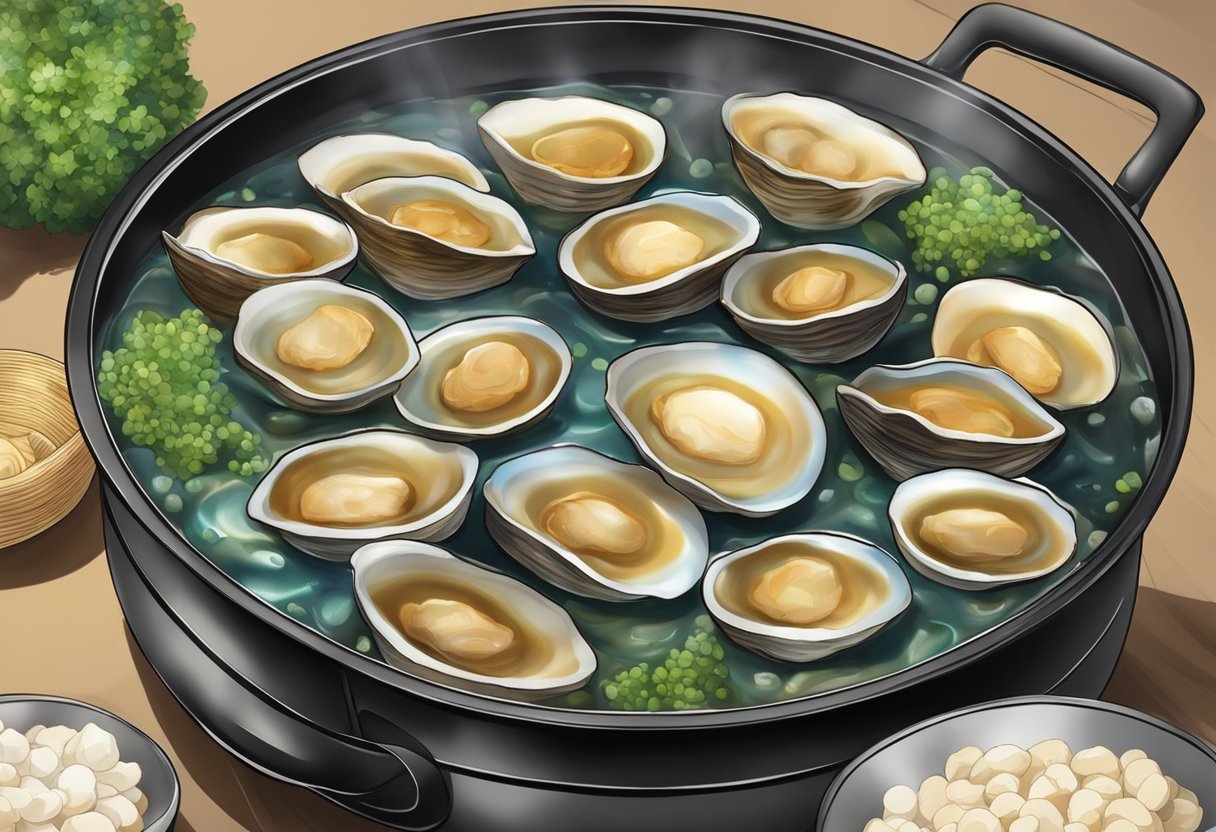
Abalone Sauce: A Delicious Addition to Your Seafood Dishes
Abalone sauce is a delicious and versatile condiment that can add a unique flavour to your dishes. Made with abalone, a type of sea snail, this sauce has a rich and savoury taste that pairs well with a variety of ingredients. Whether you're a seafood lover or just looking to try something new, abalone sauce is definitely worth a try.
Making abalone sauce is a relatively simple process, and there are many recipes available online to help you get started. Some of the key ingredients you'll need include abalone (fresh or canned), oyster sauce, soy sauce, garlic, ginger, and chicken stock. By combining these ingredients in the right proportions and cooking them together, you can create a delicious sauce that will elevate the flavour of your dishes.
Abalone sauce can be used in a variety of ways in the kitchen. It's a great condiment for seafood dishes, but it can also be used to add flavour to meats, vegetables, and even noodles. Some popular pairings include scallops, shrimp, broccoli, and stir-fry dishes. With its rich and savoury taste, abalone sauce is a great way to add depth and complexity to your cooking.
Key Takeaways
- Abalone sauce is a versatile condiment that can add a unique flavour to your dishes.
- Making abalone sauce is a simple process that requires a few key ingredients.
- Abalone sauce pairs well with a variety of ingredients and can be used in a variety of dishes.
Making Abalone Sauce

If you're a fan of stir-fry dishes, fried rice, or braised abalone, then you'll love this abalone sauce recipe. It's a perfect blend of flavours and can be used as a soup base or glazing for your favourite dishes.
Ingredients and Substitutes
To make abalone sauce, you'll need the following ingredients:
- 1 can of abalone
- 1 tablespoon of soy sauce
- 1 tablespoon of oyster sauce
- 2 cloves of garlic, minced
- 1 teaspoon of grated ginger
- 1 teaspoon of sugar
- 1/4 teaspoon of salt
- 1 tablespoon of cornstarch
- 1/4 cup of water
If you don't have abalone, you can substitute it with dried scallops or shrimps. You can also use chicken or vegetable broth instead of water for a richer flavour. If you're allergic to soy sauce, you can use tamari or coconut aminos instead.
Preparation Techniques
To prepare the abalone, rinse it thoroughly and tenderize it by pounding it gently. If you're using dried scallops or shrimps, soak them in water for at least 30 minutes before using them.
To make the cornstarch solution, mix the cornstarch and water in a small bowl until it's smooth. This will help thicken the sauce and give it a smooth texture.
Cooking Methods
To make the abalone sauce, heat some oil in a pan over medium heat. Add the minced garlic and grated ginger, and sauté until fragrant. Add the abalone to the pan and cook for 2 minutes on each side until slightly golden.
Add the soy sauce, oyster sauce, sugar, and salt to the pan. Stir and cook for 1 minute until the abalone is coated with the sauce. Pour in the cornstarch solution and stir until the sauce thickens.
Your abalone sauce is ready to use! You can store it in an airtight container in the fridge for up to a week. Use it as a glazing for your favourite dishes or as a soup base for a delicious and flavourful soup.
Culinary Uses and Pairings

Abalone sauce is a versatile ingredient that can be used in a variety of dishes. Here are some ideas for culinary uses and pairings:
Dish Pairings
Abalone sauce goes well with a variety of dishes, including fish, chicken, scallops, noodles, rice, and sea cucumber. It can be used as a marinade, a glaze, or a dipping sauce.
For a delicious appetizer, try serving abalone sauce with steamed or fried dumplings. The sauce adds a rich and savory flavour to the dumplings, making them a perfect starter for any meal.
If you're looking for a main course, abalone sauce pairs well with grilled or baked fish. The sauce adds a subtle sweetness to the fish, complementing its natural flavour. You can also use abalone sauce to glaze chicken or scallops, giving them a rich and savoury flavour.
For a vegetarian option, try using abalone sauce to flavour stir-fried vegetables or tofu. The sauce adds a depth of flavour that complements the vegetables, making them a delicious and satisfying meal.
Serving Suggestions
Abalone sauce is a delicacy that should be refrigerated after opening to maintain its freshness. When using abalone sauce, be sure to stir it well before using to ensure that the ingredients are evenly distributed.
If you're planning a reunion or feast, abalone sauce is a great addition to your menu. It is a traditional dish that is often served during the Lunar New Year, symbolizing wealth and prosperity.
When serving abalone sauce, be sure to use a small amount at a time, as it is a rich and flavourful sauce. You can also garnish your dish with chopped spring onions or sesame seeds to add a pop of colour and flavour.
In conclusion, abalone sauce is a versatile ingredient that can be used in a variety of dishes. Whether you're looking for a marinade, glaze, or dipping sauce, abalone sauce adds a rich and savoury flavour to any dish.
Frequently Asked Questions

How do you whip up a tasty abalone sauce?
Abalone sauce is a delicious and versatile condiment that can be used to add flavour to a variety of dishes. To make a tasty abalone sauce, you'll need to start with some fresh or canned abalone, oyster sauce, soy sauce, garlic, and ginger. Simply mix all the ingredients together in a bowl and stir until well combined. Adjust the seasoning to taste, and you're ready to go.
Can you substitute oyster sauce with abalone sauce?
Yes, you can substitute oyster sauce with abalone sauce in most recipes. However, keep in mind that the two sauces have different flavours, so the end result may taste slightly different. Abalone sauce has a richer, more complex flavour than oyster sauce, so it may be a better choice for dishes that require a more intense flavour.
What are some popular dishes that include abalone sauce?
Abalone sauce is a popular ingredient in many Chinese dishes, including stir-fried vegetables, steamed fish, and braised meats. It's also commonly used in dim sum dishes, such as steamed dumplings and buns. Some popular dishes that feature abalone sauce include abalone fried rice, abalone congee, and abalone with mushroom and broccoli.
What's the difference in taste between abalone sauce and oyster sauce?
Abalone sauce and oyster sauce are both savoury condiments that are used to add flavour to a variety of dishes. However, abalone sauce has a richer, more complex flavour than oyster sauce. Abalone sauce is made from abalone, which has a unique umami flavour that is hard to replicate. Oyster sauce, on the other hand, is made from oysters, which have a milder flavour.
What ingredients go into making abalone sauce?
Abalone sauce is typically made from abalone, oyster sauce, soy sauce, garlic, and ginger. Some recipes may also include other ingredients, such as sugar, rice wine, or chicken broth. The exact ingredients and proportions used may vary depending on the recipe.
If I haven't got abalone sauce, what's a good alternative?
If you don't have abalone sauce on hand, you can try using oyster sauce or soy sauce instead. These sauces have a similar flavour profile to abalone sauce and can be used as a substitute in most recipes. However, keep in mind that the end result may taste slightly different.


